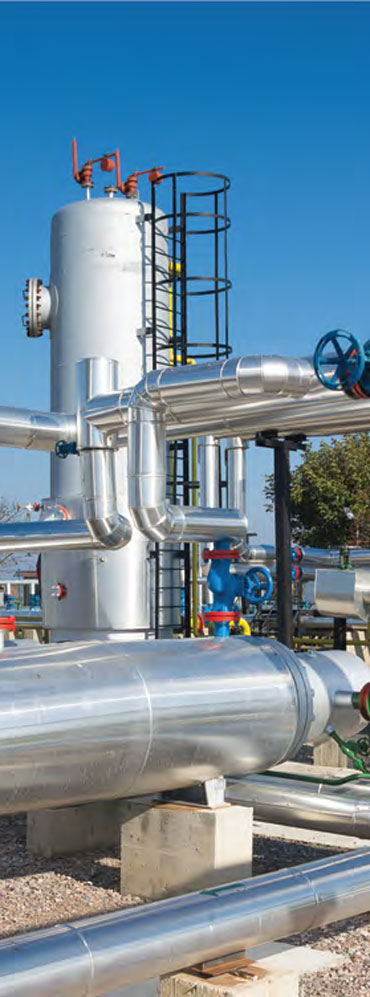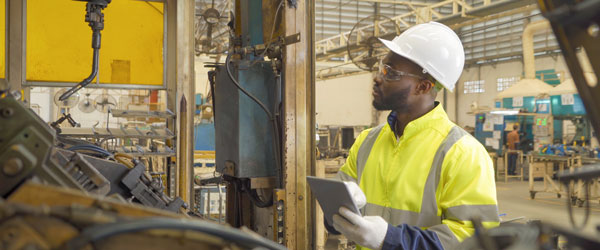Case Study
Edge Computing in Midstream Oil & Gas
This Midstream Oil & Gas Operator standardized Stratus Zero-Touch Computing to meet pipeline cybersecurity mandates, modernize infrastructure, and converge IT and OT
Stratus computing platforms were foundational in helping this oil & gas company meet new cyber mandates, consolidate workloads, reduce TCO and organizational siloes, improve communications and data management, and scale deployments with ease across multiple locations and sites.
Challenges
- Adhere to new TSA/DOT cybersecurity requirements for pipeline owners and operators
- Modernize and scale infrastructure for IT and OT (SCADA/HMI)
- Address aging workforce challenges and need for simple platform
- Coordinate across several departments and teams to align on needs and requirements
- Improve communications bandwidth and data management
Solution
- Interoperable Stratus ztC Edge – ~50+ platforms®
- Customizable software based on local site requirements, including:
- Ignition SCADA
- Xage Cybersecurity
- OSI Pi Historian
Benefits
- Met new cyber mandates
- Easy to deploy and maintain fault tolerant platform
- Consolidated workloads onto one platform reducing TCO and organizational siloes
- Savings estimation of $50-60K per site over a 5-year support cycle
- Flexible platform – IoT projects in the future
Introduction:
This large Midstream oil and gas company in the United States has interstate natural gas pipelines and gathering and processing operations throughout the country. Used every day to heat homes, cook food, and generate electricity, this company works closely with customers to provide the infrastructure to serve growing markets and safely deliver natural gas products, reliably fueling the clean energy economy.
After the TSA/DOT revised cybersecurity requirements for pipeline owners and operators at remote sites and at the critical infrastructure level, the company began exploring different platform options. It was then that the OT team connected with the IT team to determine there was a joint need for a platform to address the updated cybersecurity mandates as well as challenges with the organization’s network, legacy infrastructure, and with transfer of knowledge. The oil and gas company turned to Stratus for support.
Stratus zero-touch computing platforms with built-in, out-of-the-box fault tolerance deliver reliability, compute power, and easy serviceability to improve operational processes, support regulatory compliance, and eliminate data loss while delivering necessary cybersecurity and data protection. Stratus computing platforms were the foundation to help the company meet cyber mandates as well as consolidate workloads, reduce TCO and organizational siloes, improve communications and data management, and scale deployments with ease across multiple locations and sites.
The challenges: cybersecurity compliance, network concerns, siloes, and aging workforce
Like many other organizations in the industry, this oil and gas company had to face revised cybersecurity requirements implemented by the TSA to protect critical infrastructure from cyberattacks. The company had to find a reliable solution to help bolster access control measures, multi-factor authentication, the adoption of network segmentation policies and control, and cybersecurity protection across operational infrastructure.
The updates required were no small feat, with the company looking to harden their operational infrastructure to comply with these TSA mandates. As the IT teams investigated options, the company’s OT team was also struggling with their own challenges, such as the need to update and modernize their infrastructure and tackle legacy and disparate platforms across multiple sites. They had many different systems, acquired over the years, running several software technologies ranging from historians, HMI, and SCADA to orchestration and containerization tools, and there was a need to consolidate workloads to save on costs, as well as scale this infrastructure across the company’s many locations.
Additionally, with the vast amount of data being created, collected, and processed, it was important for the company to ensure their network could handle the amount of data they needed to transfer. With low bandwidth and latency concerns, it was essential to send more data with less bandwidth leveraging MQTT. Improving communication and data management would also make sure that the company’s edge compute and connectivity infrastructure are up to the challenge of future IoT concerns.

Another challenge the company faced was an aging workforce – many of their skilled workers with a wealth of operational and company knowledge were approaching retirement age. The organization was looking for simple and easy-to-use platform solutions, with remote management capabilities, to ensure the incoming, younger workforce would be able to deploy, maintain, and manage operational infrastructure efficiently. It was also important to deploy systems that can learn from their most experienced operators and then provide guidelines for their newest operators – the transfer of this knowledge was key.

The solution: a foundation for both IT and OT teams
This oil and gas leader has several teams and departments within the organization, including IT and OT departments. There are also focused teams handling SCADA, digital operations, communications, and cybersecurity, to name a few. As a whole, the company’s enterprise architecture spans across IT and OT, where both departments and teams had a common interest. What had started as an IT challenge with the TSA mandates actually brought in the OT teams to determine if there was a solution to fit multiple needs and address company siloes. That solution was the Stratus ztC Edge platform.
For the oil and gas company, the choice was clear that the Stratus ztC Edge was a foundation for the IT and OT teams to build upon. They recognize that although assets can be out in the field, there is a convergence of both IT and OT functions, requiring all teams to work together seamlessly. Instead of each choosing different platforms, it was clear that the ztC Edge could handle IT and OT workloads and support the organization’s operations many other ways.
The Stratus ztC Edge is extremely reliable and capable of running different cybersecurity applications – such as Palo Alto, Fortinet, or Xage – to help stay in compliance with the TSA. The platform also hosts MQTT software, ensuring the company can share critical data across the entire infrastructure without experiencing bandwidth or latency concerns.
With impressive interoperability, Stratus zero-touch computing platforms enable compatibility and seamless integration with diverse software, hardware, and services, reducing the need for costly custom solutions. Stratus platforms also have open standards, helping the company adhere to common protocols and practices, ensuring consistency and reliability across different systems and platforms. This will also make it easier to scale across the company’s entire infrastructure.
For OT teams, the need for a robust solution was essential in keeping operations running. With self-monitoring and self-protecting features, the ztC Edge platform helps reduce unplanned downtime. And because its operating environment can be updated while still running or requiring a system reboot, the company experiences less planned downtime as well.
If there was a loss of a DIM or SSD or there was a component failure, the company needed a platform that made it easy to remediate the challenge without having to send people out to the site, which could sometimes turn into days of troubleshooting and bug hunting as well as expensive field visits that could cost up to $10,000.
Remote management capabilities help address the aging workforce concern, as it’s easier to hire younger professionals who would rather work in certain locations. Having the Stratus ztC Edge platform allows employees to remotely configure applications and virtual machines (VMs) from a home office. This empowers the oil and gas company to spread their workforce and expertise much further.
Stratus ztC Edge supports workload consolidation and cost savings
The Stratus ztC Edge computing platform is hazardous rated and hardened – Class 1 Division 2 certified – allowing it to live in the field in harsh conditions. With its built-in virtualization, automated protection, industrial interoperability, OT manageability, and field serviceability, ztC Edge enables the quick, easy delivery of both highly available and fault tolerant virtualized edge applications. Not only that, but ztC Edge is easy to deploy and secure, easy to manage locally and remotely, and easy to maintain and service.
Cost savings were a huge benefit of choosing Stratus for the oil and gas leader. By consolidating workloads onto one platform instead of several, IT teams were able to run virtualization on the ztC Edge platform and have their VMs, network function, and cybersecurity tools out at the edge and closer to critical assets. OT teams could also spin up their VMs, including SCADA, historian, and data collection applications that are crucial to operations. It was a huge benefit to have less devices and fewer points of failure out in the field, which also saved on deployment costs for the company.

Another example of cost savings was apparent in the company’s northeast sector where they must maintain onsite historical data. Each facility had a hardware-based historian plugged into the back rail, but if one of those historians were to fail, it’s extremely expensive – up to $10,000 – to replace that one device. There’s also sometimes a year lead time to get that device, so if there isn’t a backup version available the company would no longer be in compliance with the regulatory requirements in that area. Instead, the company can now spin up a VM with a historian onto the ztC Edge, which could be done in just a day, without losing that critical data and staying in compliance.
The company also is anticipating cost savings of about $50-60,000 over a five-year support cycle. By deploying the Stratus ztC Edge platforms, which have an eight plus-year lifespan compared to the typical three-to-five-year lifespan, there are significant savings by not needing to send employees with specialized skillsets to replace hardware, servers, or IPCs cross different locations and sites.
Stratus ztC Edge delivers simple, protected, autonomous operations and 24/7 proactive support
After performance testing and piloting Stratus, the IT and OT teams received company-wide approval to deploy Stratus zero-touch computing platforms – specifically the ztC Edge.
With goals of cybersecurity adherence, workload consolidation, scalability, and a reduction of TCO and siloes, the Stratus ztC Edge platform met stringent requirements by having pre-integrated virtualization and by being:
Simple
- Easy to manage and deploy; sets up in minutes
- Simple single button restores
Protected
- Seamless failover with embedded security
- Full stack monitoring
Autonomous
- Predictive health capabilities; self-monitoring and self-healing
- Automated administration
- Remote management






